Workplace Wellness: Getting Started
 According to a 2015 study by the Kaiser Family Foundation and the Health Research and Education Trust, 81 percent of large employers and 49 percent of small employers offer workplace wellness programs. These programs aim to improve employees’ well-being by encouraging them to lose weight, stop smoking or make other positive lifestyle changes.
According to a 2015 study by the Kaiser Family Foundation and the Health Research and Education Trust, 81 percent of large employers and 49 percent of small employers offer workplace wellness programs. These programs aim to improve employees’ well-being by encouraging them to lose weight, stop smoking or make other positive lifestyle changes.
What is Workplace Wellness?
Workplace wellness refers to the education and activities that a worksite sponsors to promote healthy lifestyles. Examples of wellness programs include health education classes, subsidized use of fitness facilities and internal policies or programs that promote healthy behavior.
Do Wellness Programs Really Work?
When sponsoring a wellness program, the main hurdle to success is employee engagement. Wellness programs can only work if a significant number of your employees take part in your efforts. In order to gain buy-in, some businesses offer employees an incentive for participating or reaching certain health goals.
Why Workplace Wellness?
Wellness affects your company’s bottom line in many ways. It can lower health care costs, increase productivity, decrease absenteeism and raise employee morale. Because employees spend so much time at work, the workplace is an ideal setting to address health and wellness issues. According to the U.S. Centers for Disease Control and Prevention (CDC), employees in companies with “a strong culture of health” are three times more likely to actively strive to improve their health.
Control Health Insurance Costs
Health care costs can be a significant portion of a company’s budget, so targeting this expense can improve an employer’s bottom line. Employees with more health risk factors, including being overweight, being a smoker and having diabetes, cost more to insure, and they pay more for health care than employees with fewer risk factors.
A wellness program can help employees with high risk factors improve their quality of life and reduce their health care costs, while also helping employees with fewer risk factors stay healthy.
Sourcing Data to Enhance Your Wellness Program
Before starting a workplace wellness program, it is important to collect data to determine where to focus, so you can get the biggest return on your investment. There are three main resources that can be used to collect wellness information: employee health risk assessments (HRAs), health culture audits and personal interest surveys.
These tools can provide you with insight into the health and wellness needs of your employees so you can design a wellness program that best serves your employees.
Health Risk Assessments
HRAs are questionnaires that ask a series of questions about one’s medical history and lifestyle to identify health risks. HRAs typically include three components: a questionnaire, a risk calculation and an education report.
Some health plan providers and health care systems offer HRA programs for the workplace. As a general rule, it is usually best for an employer to hire an outside vendor to administer HRAs. The vendor should be able to ensure that it is legally compliant and has the proper security measures in place to protect your employees’ data.
Vendors will then supply an HRA report and give feedback to employees. Medical information obtained as part of the HRA must be kept confidential. Generally, employers may only receive medical information that does not disclose the identity of specific employees.
If you decide to offer an HRA, communicate to your employees ahead of time about the benefits of HRAs. Consider providing incentives, such as gift certificates or monetary rewards, to encourage employees to fill out an HRA.
Health Culture Audits
Health culture audits help determine how your company’s culture relates to your employees’ health and productivity. This audit assesses items such as health norms and your employees’ attitudes about health and well-being as it relates to your company. Results from this audit can be used to determine how your workplace can be more supportive of healthy behaviors.
Personal Interest Surveys
A personal interest survey uncovers the interests and health needs of your employees. While there are a variety of survey methods, one that may be helpful is the Likert scale, which asks employees to rank items from “strongly disagree” to “strongly agree.”
Survey results can be used to identify which initiatives employees would most like to see in the workplace. Asking for input makes employees feel like their opinions are valued, which may make them more inclined to participate in wellness activities in the future.
By using these data collection tools, you can gather the information you need to evaluate your wellness program and modify your initiatives to increase employee engagement and increase your return on investment.
NOTE: Health information that is collected through a wellness program, including a health risk assessment, is subject to confidentiality restrictions under federal law. The Health Insurance Portability and Accountability Act of 1996 (HIPAA), the Americans with Disabilities Act (ADA) and the Genetic Information Nondiscrimination Act of 2008 (GINA) each include rules to protect the privacy or confidentiality of employees’ health information. Check with legal counsel if you are unsure whether your program complies with applicable law.
